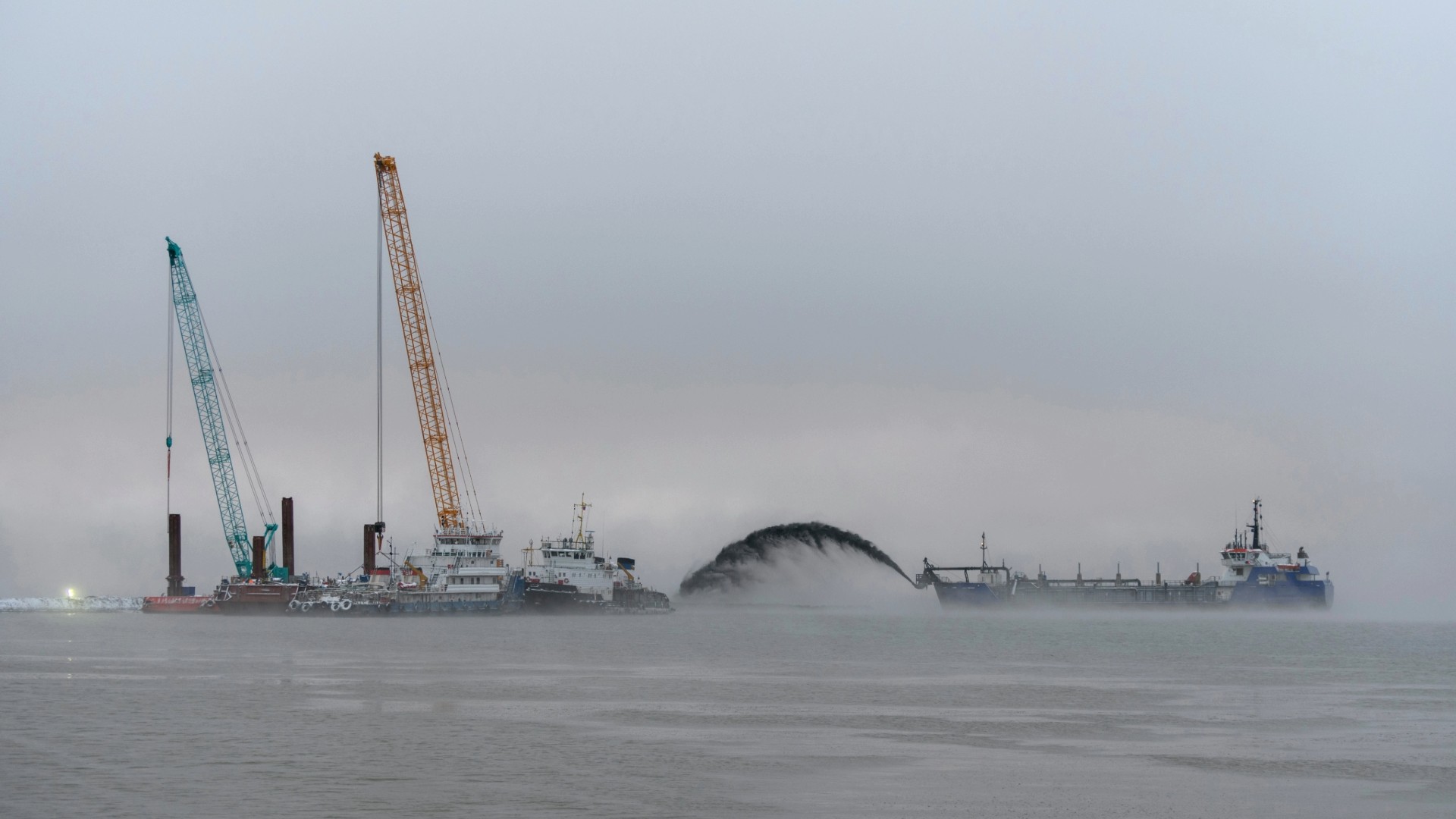Dredging has long been a cornerstone of marine engineering, playing a critical role in maintaining ports, waterways, and coastal zones. As global trade expands, coastal cities grow, and climate challenges intensify, the dredging industry is evolving rapidly. Today, it is no longer solely about moving sediment; it is about doing so smarter, cleaner, and more efficiently than ever before.
Emerging dredging technology and dredging innovation are redefining the way infrastructure projects are approached—bringing in automation, sustainability, data integration, and precision techniques to tackle the increasingly complex demands of the modern marine environment. This article explores the most important trends reshaping the dredging landscape and how they are driving growth, efficiency, and resilience across global marine projects.
Smart Dredgers: The Rise of Automation and AI
One of the most transformative developments in the industry is the integration of smart dredger technology. These modern dredgers are equipped with sensors, GPS, AI-based control systems, and real-time data processing tools. They can adapt operations on the fly, monitor dredging depths with high precision, and avoid over-excavation or damage to sensitive ecosystems.
These intelligent systems improve productivity by enabling:
- Autonomous operations for repetitive dredging tasks.
- Remote monitoring and control, reducing the need for on-site personnel.
- Data-driven maintenance, predicting equipment wear and failure before they happen.
For example, companies like Damen and Royal IHC are now deploying advanced trailing suction hopper dredgers (TSHDs) that optimize fuel efficiency and dredging accuracy using integrated digital systems.
Digital Twin Technology
Digital twins—virtual replicas of real-world systems—are making their way into dredging innovation. By mirroring dredging operations in a virtual environment, project managers can simulate outcomes, forecast performance, and optimize workflows even before actual excavation begins.
With digital twins, teams can:
- Visualize sediment behavior.
- Optimize channel designs.
- Simulate environmental impact scenarios.
- Plan cost-effective dredging schedules.
This innovation allows marine infrastructure projects to reduce errors, mitigate risks, and deliver projects on time and within budget.
Sustainability and Eco-Friendly Dredging
Environmental sustainability is no longer an option—it’s a necessity. As awareness of climate change and habitat degradation grows, the dredging sector is innovating to minimize ecological footprints.
Key strategies include:
- Low-turbidity dredging methods that minimize suspended particles in the water.
- Selective dredging to avoid harming marine life.
- Use of biodegradable hydraulic fluids and electric-powered equipment.
- Beneficial reuse of dredged materials for beach nourishment, wetlands restoration, or land reclamation.
Such dredging innovation ensures that projects support long-term coastal resilience while aligning with environmental regulations.
Dredging for Climate Adaptation and Coastal Defense
With sea-level rise, storm surges, and coastal erosion on the rise, dredging has become a key component of climate adaptation strategies. Infrastructure projects today increasingly focus on:
- Building natural or hybrid coastal defenses using dredged material.
- Restoring riverbanks and wetlands to act as flood buffers.
- Raising low-lying urban land to reduce flood risk.
Through strategic dredging technology, planners can reengineer vulnerable coastlines and waterways to handle extreme weather while protecting human lives and infrastructure.
Modular and Mobile Dredging Equipment
Another important trend in dredging technology is the development of modular and mobile equipment. These systems are easy to transport, assemble, and deploy in remote or constrained environments. Smaller ports, rivers, and inland waterways—often overlooked in the past—can now benefit from efficient and cost-effective dredging.
Mobile dredgers offer:
- Flexibility for small to mid-scale projects
- Rapid deployment in emergency situations
- Lower logistics costs
This trend democratizes access to advanced dredging capabilities, especially in developing regions or disaster-prone zones.
Big Data and Dredge Management Platforms
The integration of big data analytics is revolutionizing how dredging projects are managed. Dredge management platforms collect data from multiple sources—sonar, GPS, sediment samples, environmental sensors—and use it to generate actionable insights.
This allows for:
- Real-time decision-making
- Automated compliance reporting
- Operational transparency across stakeholders
- Enhanced safety and risk management
These platforms not only increase efficiency but also help companies meet stricter regulatory and environmental standards.
Collaborative and Cross-Sector Approaches
Modern marine projects are increasingly collaborative. Engineering firms, dredging contractors, environmental agencies, and technology providers now work together to deliver integrated solutions. These partnerships foster innovation, share risk, and speed up implementation.
Examples of this include:
- Public-private partnerships for port development.
- Joint ventures for climate resilience projects.
- Cross-border dredging operations for international water bodies.
Such cooperation supports the scaling and acceleration of complex marine infrastructure initiatives.
Conclusion
From autonomous dredgers to eco-conscious practices, the dredging industry is undergoing a dynamic transformation. The fusion of dredging technology and dredging innovation is enabling marine and coastal infrastructure projects to become more efficient, adaptive, and sustainable than ever before.
As global demand for resilient ports, clean waterways, and climate-ready coastlines grows, the adoption of smart systems, data-driven planning, and sustainable practices will become the new industry standard. The future of dredging lies not just in the depth of excavation, but in the depth of innovation.
